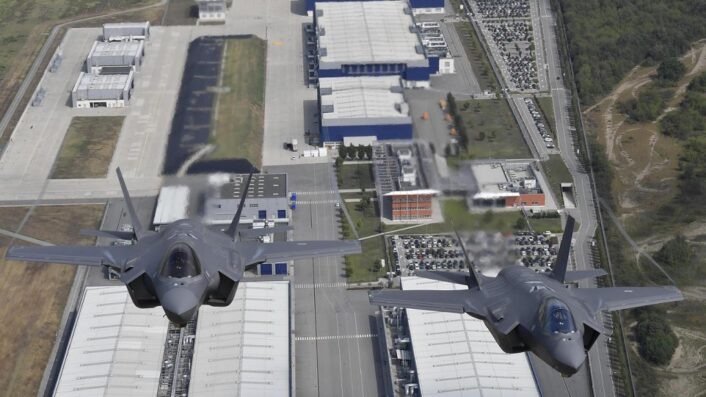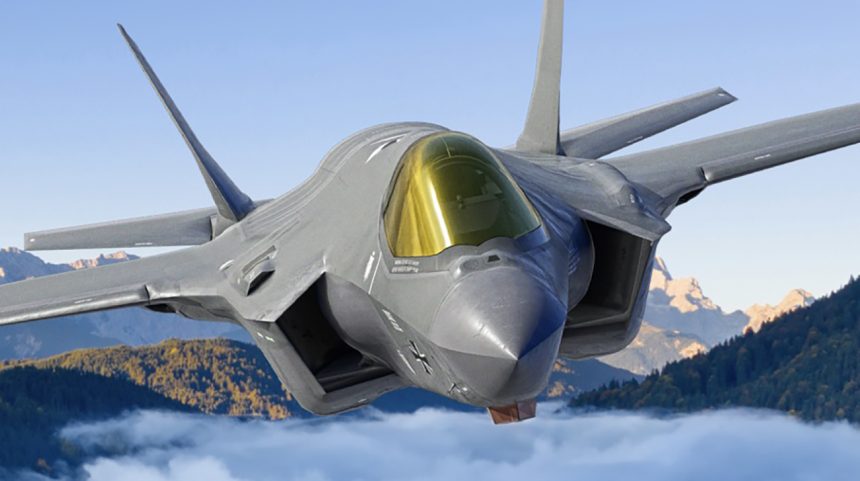While initially a portion of the F-35s was expected to be built at the Final Assembly Check Out facility in Cameri, Italy, Germany has now opted to build all 35 at the production facility in Fort Worth, Texas.
As we already reported, the German Ministry of Defense signed a Letter of Acceptance (LoA) for the acquisition of 35 F-35 Lightning II fighter jets in 2022. Recently, Germany decided to have its aircraft built at Lockheed Martin’s production facility in Fort Worth, Texas, instead of the Final Assembly Check Out facility in Cameri, Italy.
According to aviation journalist Gareth Jennings, who first reported about the news, Lockheed Martin and the F-35 Joint Program Office confirmed that final assembly and check-out of German F-35 aircraft is planned to occur at the Fort Worth facility using major components from across Europe, including Germany, UK and Italy.
LM & JPO tell me, “Currently, final assembly and check-out of German F-35 aircraft is planned to occur at the Fort Worth facility using major components from across Europe including Germany, UK and Italy.” 2/5
— Gareth Jennings (@GarethJennings3) May 6, 2024
Cameri, in northwestern Italy, is home of one of the two FACO facilities where F-35s are assembled outside the United States (the other one being Nagoya in Japan). In addition to Italian F-35s, Cameri’s FACO is also producing F-35s for the Netherlands and Switzerland.
At the time of the LoA signing, J.R. McDonald, the vice president of F-35 business development at Lockheed Martin, said the expected scenario was Germany receiving some aircraft from Cameri and some aircraft from Fort Worth to avoid stretching out the delivery time.
The Cameri Final Assembly Check Out facility
The Italian FACO, a 101-acre facility including 22 buildings and more than one million square feet of covered work space, housing 11 assembly stations, and five maintenance, repair, overhaul, and upgrade bays, is owned by the Italian Ministry of Defense and is operated by Leonardo in conjunction with Lockheed Martin Aeronautics.
According to LM, 800 skilled personnel are engaged in full assembly of the Conventional Take-off/Landing F-35A and F-35B aircraft variants and is also producing 835 F-35A full wing sets to support all customers in the program. The Cameri FACO also has the only F-35B production capability outside the United States and was selected as F-35 Maintenance, Repair, Overhaul and Upgrade center for the entire European region.
The United States government recently cleared European customers to request their aircraft to be produced in Italy. Pricing and production standard are the same, as U.S. Air Force officers are assigned by the Defense Contract Management Agency in Cameri to make sure that quality stays consistent.

The main difference is the volume of the production, as Cameri builds about 15 F-35s per year and Fort Worth produces about 130. What makes Cameri’s FACO attractive is the possibility to have the initial aircraft delivered quickly, in spite of current Technology Refresh 3 (TR-3) delays experienced by Fort Worth.
Lockheed Martin confirmed to us earlier this year that the FACO is currently producing TR-2 aircraft, which are not subject to the delays and will be later retrofitted to the TR-3 configuration. According to Jennings, Poland has expressed an interest in Cameri’s production for these reasons.
The F-35’s production and delays
The Under Secretary of Defense for Acquisition and Sustainment, Dr. William A. LaPlante, approved on March 12, 2024, the Milestone C / Full Rate Production (MSC/FRP) of the F-35 Lightning II. Even though Lockheed Martin already produced 1,000 F-35 and delivered over 990, the program was still considered in the initial operational testing phase and Low Rate Initial Production.
The delay in the achievement of the Full Rate Production was mainly due to the delays of the Joint Simulation Environment, which was critical to completing the F-35 Initial Operational Test and Evaluation, which in turn was required for the Milestone C. However, immature and deficient Block 4 mission systems software and avionics stability problems with the new TR-3 hardware are causing new delays, with the deliveries of TR-3-configured aircraft on hold.
TR-3 will be installed in all new production aircraft and retrofitted on all the F-35s already in service back to Lot 10. The retrofit, which requires 14 days of downtime, will be performed during scheduled maintenance. This way the F-35 will migrate to the open-system architecture and exploit all its advantages, like adding new or improved capabilities on operational aircraft very quickly and at a reduced cost.









